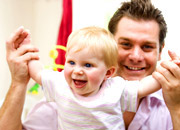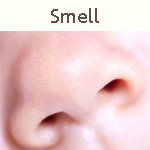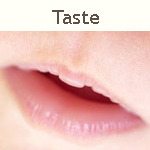Behaviour
Caring for babies
Bottle feeding
Changing a nappy
Cleaning and sterilising bottles
Daily cleaning tasks
Helping new children settle in
Preparing for a nappy change
Sleep patterns – babies
Sleep routines – babies
Toilet training
Caring for children
Allowing time for practice
Dressing/undressing
Mealtimes
Nappy change
Packing away/caring for the environment
Sleep/rest time
Toileting
Common self-help milestones
Tips for sleep and rest time
Self image
Communication
Body language
Limits and guidelines
Ways children communicate
Greeting children and families
Modelling appropriate communication
Questioning
Verbal and non–verbal communication
Acknowledging children's feelings
Listening attentively
Communicating with Aboriginal and Torres Strait Islander parents/carers
Development
Allowing time for practice
Dressing/undressing
Mealtimes
Nappy change
Packing away/caring for the environment
Sleep/rest time
Toileting
Common self-help milestones
Creative development
Language development
Modelling positive relationships
Physical development
Sharing and taking turns
Sleep patterns – babies
Sleep routines – babies
Encourage independent problem solving
Fundamental movement skills
Health, hygiene and safety
Coping with stress
Correct manual handling principles
Daily cleaning tasks
Hand washing
Hand washing poster
Manual handling overview
Toilet training
Safety checklist
Learning experiences and play
Environmentally friendly learning experiences
Learning experiences for different development areas
Creative resource materials
Arranging the environment to facilitate learning and pleasure
Indoors and outdoor areas
Creating a positive physical environment
Legal and ethical issues
Child abuse case studies
How do I recognise when a child or young person is at risk?
Tips on dealing with disclosures
Observation methods
Arranging Experiences (PDF 351Kb)
Recording observations
Rules for making observations
What you can learn from observations
Programming
Children’s interests, strengths, needs and skills
Extending the children’s interest in dinosaurs
Objective observation
Planning an OSHC environment
Behavior management plan
Planning enjoyable experiences
Planning experiences for 0 - 2 years age group
Planning experiences for 2 - 3 years age group
Planning experiences for 3 - 5 years age group
Planning experiences for 0 - 2 years age group
Sometimes figuring out the interests of the 0 - 2 years age group is quite hard. However, through accurate observation, we can identify individual interests, needs and strengths, as well as those of the group.
Safety and trust

The top priority with this age group is providing a safe environment for the children to explore in. For the primary care giver, important roles at this stage are:
- encouraging the baby to form a strong attachment with them
- helping develop a sense of trust in the world
- provide a safe environment for exploration.
Remember we need to be flexible with routines at this age, as babies may need extra naps or feeds throughout the day. This may impinge on the activities you have planned.
Sensory experiences
At this age, children need lots of support to explore sensory experiences. We provide these experiences within routines and in response to individual needs. For example we can provide a wide variety of toys of different, textures, colours and sizes, and plan different types of play experiences such as water play and outdoor time.
In order to provide appropriate sensory experiences, you need to know all of your senses. Do you?





Now that you've brushed up on the five senses, let's try a little experiment.
Ask a friend or family member to put several things on a tray without you seeing what they are. They should choose several items of varying textures, tastes and smells (perhaps something sweet, something smelly, something soft).
Next, they should bring you blindfolded to the tray and its contents for sampling. See if you can identify each item by its smell, taste and feel.
How did you find the experiment? Was it hard? Was it fun? Can you imagine exploring those things for the first time?
Write your thoughts on this experiment and your ideas for sensory experiences for young children in your notebook.